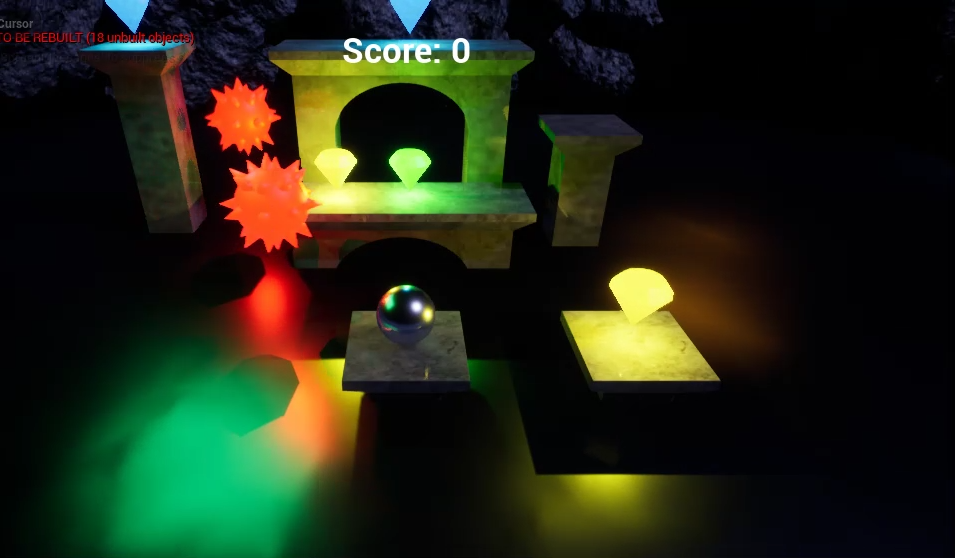Unreal Engine is an influential game development tool that can be used across a wide range of platforms — PC, console, mobile, and VR. In this beginner’s guide, readers will learn the basics of game development with Unreal Engine and will be provided with a step-by-step tutorial on how to make a simple game from scratch. The guide’s fundamental knowledge should aid readers with creating their games, from importing assets and arranging them, to adding interaction and gameplay mechanics that make their games engaging and fun to play. Finally, they will learn about the built-in testing and debugging tools of Unreal Engine.
HTML headings:
A Beginner’s Guide to Game Development with Unreal Engine
Introduction
Game development is a multidisciplinary field that combines art, programming, and design to create interactive experiences that engage players. Unreal Engine is a powerful game development tool that can be used to create games across a wide range of platforms, including PC, console, mobile, and VR.
In this beginner’s guide, we will introduce you to the basics of game development with Unreal Engine, and provide you with a step-by-step walkthrough of how to create a simple game from scratch. Whether you are a seasoned programmer looking to explore game development, or a complete newcomer to the field, this guide will provide you with the fundamental knowledge you need to start creating your own games.
Getting Started with Unreal Engine
Before you can start creating your game, you first need to download and install Unreal Engine on your computer. The process is relatively straightforward, and can be completed in a few simple steps:
1. Visit the Unreal Engine website (https://www.unrealengine.com) and create an account.
2. Once you have created an account, download the Epic Games Launcher.
3. In the Epic Games Launcher, navigate to the Unreal Engine tab, and click the “Install” button to download the latest version of Unreal Engine.
Creating a New Project
Now that you have Unreal Engine installed, you can begin creating your game. The first step is to create a new project:
1. Open Unreal Engine and navigate to the “Projects” tab.
2. Click the “New Project” button, and select the type of project you want to create (e.g. first-person shooter, platformer, puzzle game, etc.).
3. Enter a name for your project, and select a location on your computer where you want to save it.
The Unreal Engine Interface
Once you have created a new project, you will be presented with the Unreal Engine interface. The interface is made up of several panels and windows, each of which serves a specific purpose:
1. Content Browser: This panel displays all of the assets (e.g. textures, models, sounds) that are used in your game.
2. Viewport: This panel displays a preview of your game world, and allows you to move around and interact with it.
3. Details Panel: This panel displays information about the selected item in the Content Browser or Viewport.
4. Modes Panel: This panel contains a selection of tools and modes that can be used to create and edit your game world.
Building Your Game World
Now that you are familiar with the Unreal Engine interface, you can begin building your game world. This is done by adding assets to your project and arranging them in a way that creates the environment and characters of your game:
1. Importing Assets: To import an asset into your project, simply drag and drop it from your computer into the Content Browser.
2. Placing Assets: To place an asset in your game world, select it from the Content Browser and drag it into the Viewport.
3. Arranging Assets: To arrange assets in your game world, use the Transform tool to move, rotate, or scale them.
Adding Interaction and Gameplay
Now that you have created the environment and characters of your game, you can add interaction and gameplay mechanics to make your game more engaging and fun to play:
1. Blueprints: Blueprints are a visual scripting tool that allow you to create gameplay mechanics and interactions without needing to write code.
2. Events: Events are triggered by certain actions or conditions in your game, and can be used to create interactions and gameplay mechanics.
Testing and Debugging Your Game
Once you have created your game, it is important to test and debug it to ensure that it is functioning correctly and without errors. This can be done using the built-in testing and debugging tools in Unreal Engine:
1. Playtesting: Playtesting allows you to test your game in real-time, and identify any bugs or issues that need to be fixed.
2. Debugging: The debugging tools in Unreal Engine allow you to track down and fix any errors in your code or gameplay mechanics.
Conclusion
Game development is a complex and challenging field, but with the right tools and knowledge, it is also incredibly rewarding. Unreal Engine provides a powerful and flexible platform for game development, and with this beginner’s guide, you now have the fundamental knowledge you need to start creating your own games.
Whether you are working on a small indie project or a AAA title, the skills and techniques you have learned in this guide will help you create engaging and immersive gaming experiences that captivate and delight players. So go forth and create, and have fun bringing your game ideas to life with Unreal Engine.
